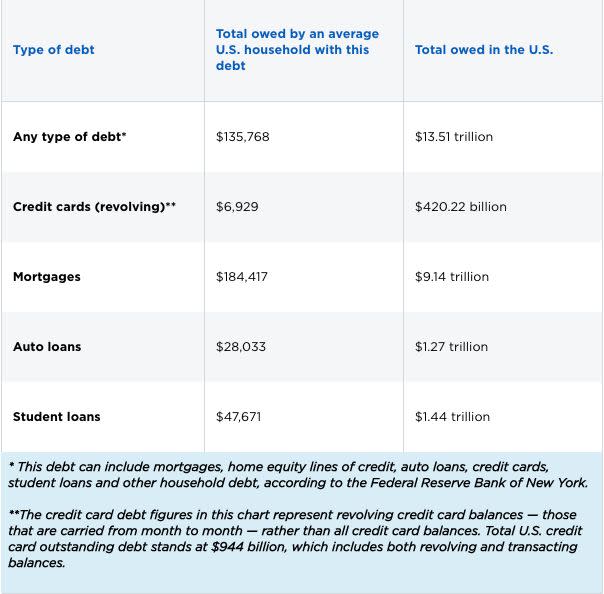American families carrying more credit card debt than last year: report

The average American household carries roughly $7,000 in revolving credit card debt, according to the 2018 household debt report by NerdWallet. Last year the figure was $6,081.
Revolving debt is defined as a balance that is carried from one month to the next. This year’s report focused on revolving debt because it is a “more accurate indicator” of financial hardship, NerdWallet said.
Month-to-month credit card balances increased to $420 billion this year. That’s roughly 5% more than Americans were carrying last year. Even though the economy is on solid ground, there’s been some wage growth and the unemployment rate is holding steady at 3.7%, higher costs have added to the increasing debt.
The biggest reason for the increase: expenses are rising faster than incomes. “One that jumps out are medical costs and food costs away from home. And student loan forbearances are also adding to debt,” says Kimberly Palmer, a NerdWallet specialist.
The average American household holds roughly $136,000 in debt, which can include mortgages, credit card debt, auto loans, student loans, and other kinds of household debt. In total, that amounts to $13.51 trillion of debt in the United States.
Filling the gap
Once accrued, credit card debt can be difficult to pay off. About 9% of Americans don’t think they’ll ever be completely credit card debt-free, according to a NerdWallet survey.
“Carrying revolving debt and at these levels is a huge drag on household finances,” says Palmer.
Palmer says it’s “worrying” that so many Americans doubt their ability to pay off their credit cards: “That just shows how hard it is to pay off debt once it’s accrued.”
The report highlights that the revolving debt is a good indicator that people are supplementing their income with credit cards to make purchases.

“Credit card debt is often what people turn to when they can’t make up the difference between their income and the cost,” Palmer says. “Credit card debt is very expensive. Households are paying on average $1,141 in just interest.”
Average credit card interest rates are at their highest levels in two years, topping 17% in October. Outstanding credit card balances have also increased, reaching $944 billion, according to the report.
Debt growing with age
The NerdWallet report also found that credit card debt varied by age.
Millennials carried the least, at roughly $4,500.
Palmer says that’s to be expected: “That’s a factor of their age and also when they came of age.”
Millennials are known for saving more than other generations. They also came of age at a time when borrowing restrictions were tighter, Palmer says. It’s well known that Generation X carries higher debt loads.
For those aged 45-54, the debt load significantly increases, to more than $8,500. Those aged 55-64 owed, on average $8,100.
Palmer stresses the importance of paying off revolving debt.
“First, prioritize paying off debt with the highest interest rates,” she says. After ensuring you’re paying the credit card minimum, Palmer advises crafting a budget to pay more so that those with revolving debt balances can pay it off.
Kristin Myers is a reporter at Yahoo Finance. Follow her on Twitter.
Read more:
A quarter of millennials don’t feel ‘adequately prepared’ to deal with finances: survey
Map: How Democrats flipped the House

